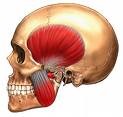 TMD/TMJ Syndrome (Temporo-Mandibular Disfunction/Tempor-Mandibular Joint) can be described as a cycle of symptoms which flare causing intermittent pain to the jaw muscles, the jaw joint, face, head, neck and even back. The primary cause of TMD is STRESS. The TMJ is the only joint system that subconsciously registers stress levels in the body. People who have this syndrome usually clinch, grind or grit their teeth during the day (and aren’t aware of it) and/or at night (when they can’t control it.)
TMD/TMJ Syndrome (Temporo-Mandibular Disfunction/Tempor-Mandibular Joint) can be described as a cycle of symptoms which flare causing intermittent pain to the jaw muscles, the jaw joint, face, head, neck and even back. The primary cause of TMD is STRESS. The TMJ is the only joint system that subconsciously registers stress levels in the body. People who have this syndrome usually clinch, grind or grit their teeth during the day (and aren’t aware of it) and/or at night (when they can’t control it.)
Imagine
clinching your fists and putting your knuckles flat against each other and
pressing as hard as you can for as long as you can. After a while something in your body would
breakdown—your knuckles would bruise, your wrists would ache, and your
shoulders and back would go into spasm. This
is what is happening in your face and head during prolonged clinching and
grinding.
The
excessive pressure from grinding or clenching your teeth causes over stimulation
and eventual fatigue of the facial muscles which often results in painful
spasms. These spasms also over stimulate
the nerves in the face (especially the trigeminal ganglion) which is
responsible for providing sensation from the temple to the chin. Once the nerve ganglion reaches its
stimulation threshold it will generate nerve pulses across the face. Your face may be extremely sensitive to the
touch or you might experience migraine headaches.
Other symptoms I have encountered with TMD
patients include neck and back pain, nausea, dizziness, irritability, insomnia,
toothaches, and more. Trauma to the jaw
joint from a motor vehicle accident or a blow to the face can also cause TMD.
The good news most TMD cases are relatively easy
to treat. I recommend an NTI
(nociceptive temporalis suppression system) which is a special type of guard
worn between the front teeth to alleviate clinching and grinding. I also recommend treating the source of TMD
by releasing stress through creative outlets such as yoga, meditation, and
other mind-body exercises.
I also highly recommend myofacial massage
therapy which will, not only help break stubborn muscle spasms and lengthen the
muscles to their original resting position, but also to simply relieve stress. In rare instances TMD will not resolve to a
tolerable level with this therapy in which case other modalities, such as
surgery, may be explored. In particular,
TMD resulting from trauma may take longer to resolve. Other things to remember—your teeth should
only touch when you chew and swallow—at all other times they should not
touch! The NTI is a great diagnostic
tool as it will provide clues as to when and where you clinch and/or grind.
TMJ/TMD is also episodic and dictated by stress
levels; therefore, you may notice symptoms return during certain stressful
times of the month, year, or life. Again
the key is to manage the stress and reduce the tension on the facial muscles,
nerves and joint complex and wear the NTI as directed until symptoms
subside. For patients with TMD I always
recommend wearing the NTI at night as a preventative therapy.
If
you are experiencing TMD pain, please call to make and appointment so we can try to resolve your problem: Call Today 410-296-7599
for an appointment!
Yours in Dental Health,
Dr. Brett Friedman

Dr. H. Brett Friedman
Dr. Friedman earned his Doctorate of Dental Surgery from the University of Maryland, Baltimore College of Dental Surgery in 1996. For over 20 years, Dr. Friedman has been creating the smiles of his patients’ dreams. He believes that nothing should stand between you and a healthier smile.